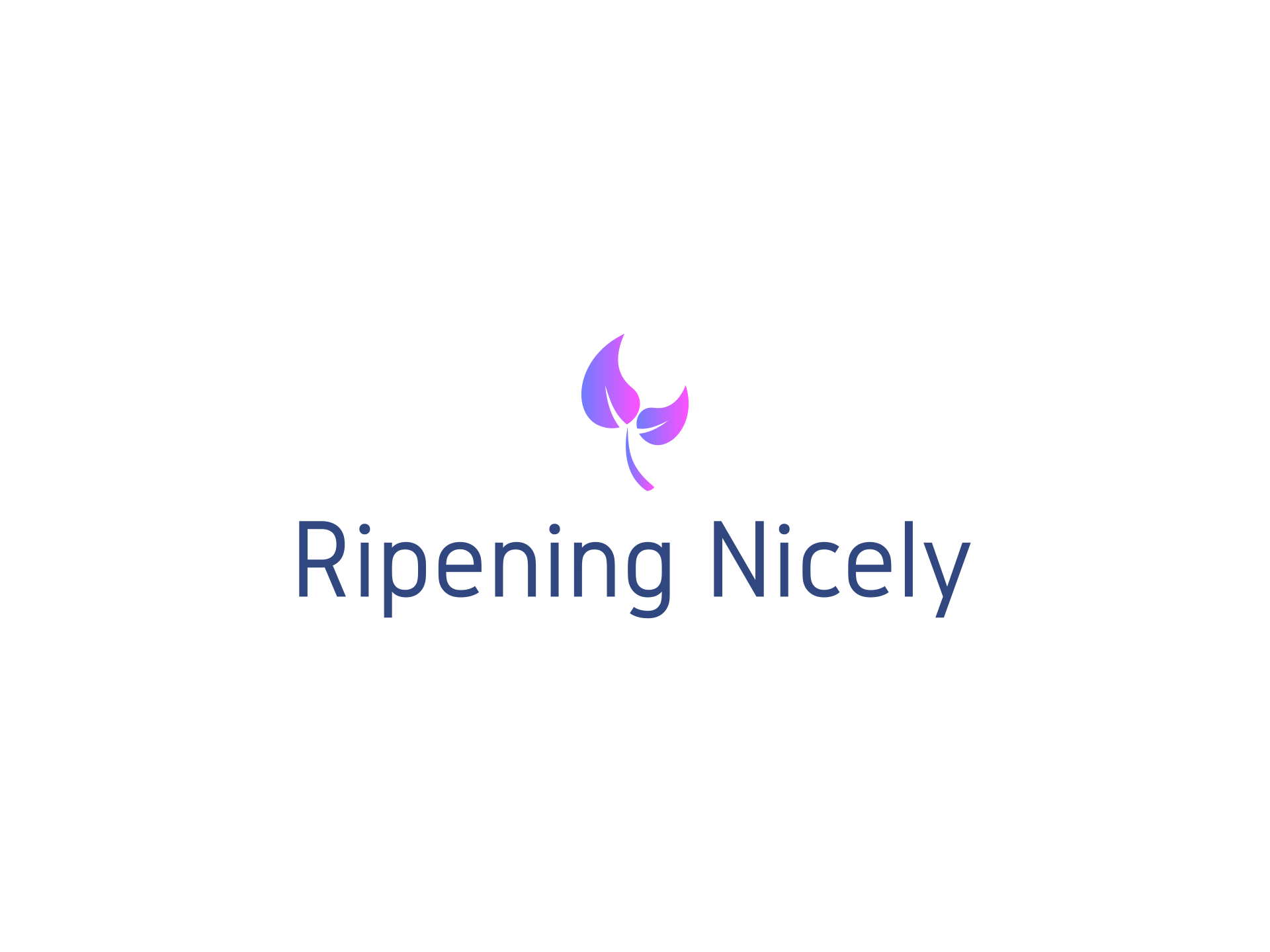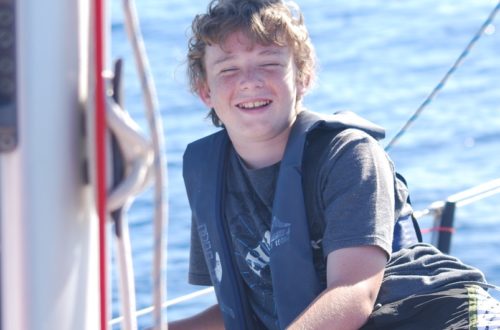
Settling in at Chagos
I never thought that we’d ever intentionally take Aroha so close to so many coral reefs, but here we are off Boddam island in Soloman Atoll in Chagos with a reef about thirty meters on both the west and the north side. Bernd is on a mooring nearby and joked that at low tide, he can just about walk around his boat. He’s not too far off the truth – he’s got three reefs around him!
There are only two atolls that yachties can visit in Chagos. Peros Banhos, the larger one is very open and unsheltered at this time of the year and has only three anchorages where the BIOT authorities allow yachts to anchor. The smaller one where we are has two allowable anchorages. The anchorage in the east of Soloman Atoll is very sheltered from the prominent wind direction, but so unsafe when the wind changes that occasionally yachts are forced to leave their anchorage in the middle of the night. That can’t be too much fun with the number of uncharted coral heads inside the atoll. There are two yacht wrecks on the reef as tombstones to yachties dreams.
We have chosen what we feel is the safest anchorage at the west end of Soloman atoll, near to Boddam island. There are a number of moorings that earlier visitors have put down, by wrapping the chain around a submerged coral head and leading to a buoy on the surface. Scuba diving is banned here by BIOT but I was needed to break this rule but only to check the state of the chain and connections. After a few days of consistently windy conditions, I put a second chain on our coral head this morning as a backup. The two chains and four mooring lines holding us to our coral head may seem like overkill, but it helps us sleep at night.
It was a pretty weird experience arriving here. Only about eighteen months ago I’d never even heard of this place and up to only six months ago, I thought our chances of ever coming here would be next to nothing. With the engine ‘challenges’ on the way here and the threat of the weather worsening, we seriously considered turning back to Gan.
So, it was with a huge sense of achievement that we arrived here and found, in one of the most isolated locations on earth, a very sociable group of yachties enjoying life in paradise.
4 July 2009
I think Helen mentioned in an earlier blog about the bird-fish feeding frenzy outside the atoll as we arrived. I feel more than a little inadequate in the field of bird knowledge, but I can vouch that there were white birds and also black birds. OK, maybe I need to borrow a bird identification book before the next wildlife blog. We’ve seen tuna, job fish, grouper and I think a wahoo on our lines, although only the first three types accepted the invitation to join us in the dinghy (and galley). We see all the usual colourful fish when snorkelling off the back of Aroha, as well as baby squid (I’ve never seen them snorkelling/diving before) and an occasional turtle.
After a large communal fish filleting effort onshore a day or two back, the entrails tossed into the sea off the old jetty attracted a feeding frenzy of about ten blacktip reef sharks up to about five feet long. It also put me off snorkelling until I’d well and truly cleaned the blood and fishy smell off my hands. Unfortunately, rats also count as the most populace residents on Boddam island, so we anchor the dinghy off the beach and wade the last few meters, to keep the fuzzy creatures off Aroha.
The coconut crabs here are well impressive. They start life as hermit crabs then leave their protective shells as they grow larger. They are nocturnal- boldly venturing out from their holes, usually under old trees, just as the sun sinks. They are quite common around the area ashore favoured by yachties- picking up what we drop, often around our feet. It can be a bit of a shock when you’re not used to them. They’re big. Damn big.
5 July 2009
We’ve been here for umm… I guess about ten days so far. Needless to say, we’ve lost track of the days and they all kind of blend into each other. I find it quite a strange experience – it’s so remote here that you feel like you’re a member of an exclusive club just for getting here. It was no small achievement and I’m quietly proud that we’ve joined the mere couple of hundred people who get to visit this special place each year. Our planned one month stay here is considered short term – there are a number of boats staying for five or six months (the maximum stay permitted by BIOT is six months in any year) and I guess the average stay is about three months. It’s surprised me that there aren’t more kids here. When the BIOT officials came on board to check our permit and stamp our passports they commented that they hadn’t seen kids for a while. Helen offered to loan them ours, but they politely declined. There are roughly fourteen boats between the two Soloman atoll anchorages. I think we’ll probably stop at the other one for a day or three on the way out, in about three weeks time.
The weather hasn’t been kind since a few days after we arrived. The SW monsoon is well and truly established, with consistent SE winds, which is the pattern south of the equator. We’ve had over fifteen knots wind speed for most of the days we’ve been here with one day getting up to the high twenties for most of twenty-four hours. The wind doesn’t feel particularly dangerous, after all, we are attached by two ten millimetre chains to a huge coral head, but it makes it a bit uncomfortable onboard and a fairly wet affair going anywhere in the dinghy.
The island of Boddam next to our mooring was, I believe, the most developed of all the Chagos islands before the inhabitants were forcibly removed to make way for the American Base at Diago Garcia, which is about a hundred and fifty miles south of here. There are good walking trails across this island and lots of wildlife to see. Other cruisers are also a great source of information on how to make the most of the natural resources here, such as many different uses of coconuts at different stages of their growth. Germinating coconuts with one or two leaves contain ‘coconut floss’, a kind of semi-sweet foam; small trees, about a meter and a half high, contain in the middle of the trunks a crunchy swede like material good for salads; green and yellow coconuts are good for eating and OK for drinking; and brown coconuts good for drinking. Even better with a bit of pineapple juice and rum…
Most of all, the sailing community here is very friendly and welcoming. It feels strange to be part of a close community this far from one’s conventional idea of ‘civilisation’.
The wind and waves tend to kick up a lot of sand, so the underwater visibility has been pretty murky since we’ve been here. We’ve heard stories from other sailors that when the water is still, you can just walk around the boat and look over the side to enjoy the same view as snorkelling! Never-the-less, we’ve named the closest reef to our mooring ‘The Aroha House Reef’ and you’re almost assured of seeing blacktip reef sharks, turtles and other treats on a snorkel there. The coral growth is mind blowing – I think the most prolific and varied hard coral I’ve ever seen. There are raised coral reefs scattered about which dry out at the low end of the 1.2m tidal range and so are worth avoiding when tearing around in the dinghy (as you do). Anyway, they are quite easy to see as a deep greenish colour against the blue of the surrounding deeper water.
Between the raised reefs, the bottom around this end of the lagoon is covered with beautiful corals of various types at around six to ten meters depth. There is a kind of sand spit at the southern end of the Boddam beach facing us, and more blacktip reef sharks and small stingrays can easily be seen in the shallow water. The creatures here seem quite tame and unafraid – I make an effort of making noise and splashes when wading as I don’t fancy standing on a ray. It didn’t do any good for Steve Irving, I can’t imagine it’d do any good for me.
The area just north of Boddam island is known for being the best fishing in this atoll. Alex and I have been out a few times but have had (by local standards…) limited success. I got a mackerel tuna ‘big enough for lunch’ (errr… not very big) and then Alex got a monster mackerel tuna ‘big enough for lunch, dinner and another lunch’. I made the mistake of allowing Helen to take a photo of both of us with our respective fish… but I’ll photoshop mine a bit bigger before uploading that snap to the blog. Bryce off Silver Fern got a load more, so fired up his home-made smoker ashore the next day and saved a shelf for us. Coconut husk smoked tuna goes great with beer! Getting over the reef to get outside the atoll (and save a long detour through the only pass) takes a bit of nerve. It’s possible only on the top couple of hours of the tide and it’s definitely worth ‘not looking down’ as you plane over the coral heads just a foot or so below. I was longing for a white fish to make Polynesian Ike Mati for a party a few days back so Alex and I had a go inside the lagoon yesterday morning. Alex got a nice Jobfish. I’d never heard of this type of fish before, but Ron off Tigger (our local fish and fishing guru) identified it and told us it’s related to snapper. Ron also gave Alex and me a ‘master class’ lesson on filleting. The man is an artist – I’ve never seen such precision work on a fish!
We tried out Alex’s kneeboard behind the dinghy when the lagoon was quite flat… but the waves were still big enough for us to call it quits before his arms became too elongated. Bernd has a selection of windsurfers on board, including one which is about twenty foot long (not a typo) which can take three sails (again, not a typo). I’d tried windsurfing many years ago and promptly gave it up as too difficult. Bernd gave me a quick lesson and then the two of us were skimming across the lagoon with a sail each. What a weird contraption!









